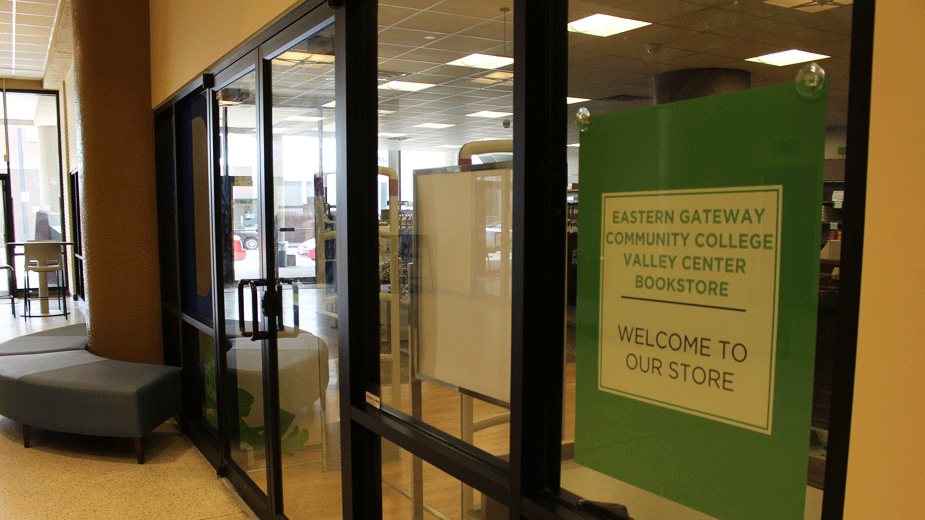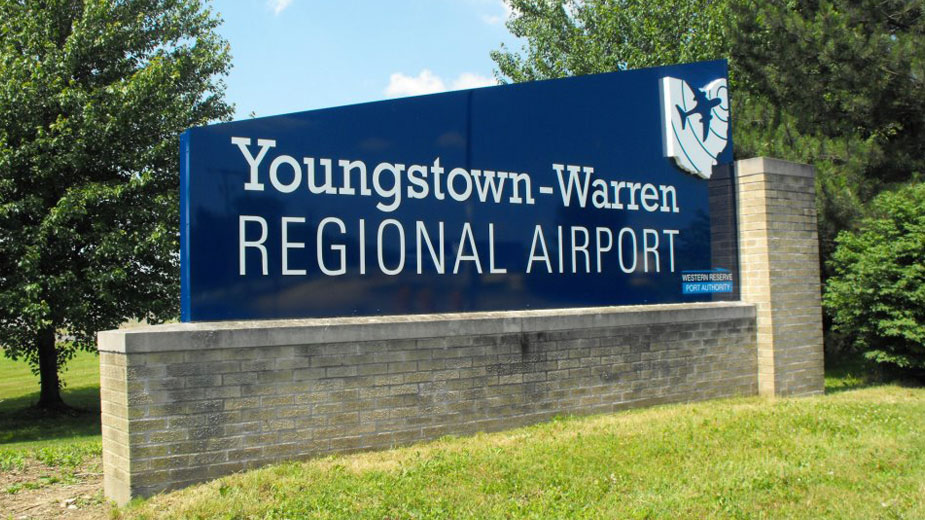EGCC Accounting Students Analyze Campus Bookstore
YOUNGSTOWN, Ohio – The bookstore in the Valley Campus of Eastern Gateway Community College could become much more profitable, even highly profitable – if the assumptions of Jim Senary’s managerial accounting class were to work out.
Granted, that’s a big if.
Senary’s last session at Eastern Gateway earlier this week saw eight students present the results of their class project, analyzing the operations of the Follett Higher Education Group bookstore and how it could increase sales and better meet student and faculty needs.
The students – group leader Justin Vinkler, Scott Glenn, Christina Bondi, Rhonda Poindexter, Savannah Cicchillo, Carmen Tejeda, Monica Smith and Erika Baldwin – tackled the lines of business: textbooks, other books, clothing, food and beverages, school supplies, health and beauty, electronics and computer-related goods.
David Stout, who holds the Andrews Chair in Accounting at Youngstown State University, wrote the text they used. He was present to hear their presentation and ask questions afterward.
So was Susan R. Aylward, regional manager of sales and operations of Kent-based Follett, who said she gained a better understanding of the campus bookstore and would explore some of the students’ recommendations.
As Senary noted, over 16 weeks the students worked closely with one another. As Vinkler said, they put in long hours on the project – weekends and nights, Senary had to arrange for the students to have access to the building outside its regular hours — and left no aspect of the 3,000 square feet unexamined.
Indeed, they began inside the bookstore, measuring it, getting a feel for its layout and giving scrutiny to where the various lines of goods were, Vinkler said.
“We measured every business line in the bookstore, including the registers and aisle space,” Vinkler stated. “We wrote down every single cost, even the clock.”
Follett shared some of its financial data with the students, including what it paid for textbooks, both new and used.
Among the things the students realized were that only 10.2% of the floor space is devoted to textbooks and more than half to clothing.
The students computed overhead – the fixed costs such as utilities, rent and labor – and variable costs. They broke down each bookstore employee’s responsibilities and determined that “40% of total labor is variable,” Vinkler said.
Because Barnes & Noble Booksellers is publicly traded, the students extrapolated from its financial reports as a basis to compare the Eastern Gateway bookstore operations and cost of goods sold.
And they visited the YSU bookstore to compare its layout and merchandise to theirs.
They conducted student surveys – the most difficult aspect of their project, Tejeda said in response to a Stout question – to learn their buying habits and preferences as well as what they wanted of the bookstore. Some 100 students were surveyed either individually or in small groups.
They conducted a SWOT analysis of each line: strengths, weaknesses, opportunities and threats.
Convenience and proximity were the strengths common to each line. Threats came from students’ ability to buy, online (Amazon) or at Target, Walmart or Dollar General, especially school supplies.
Something seemingly as simple as book protectors, which the bookstore could sell at a huge markup, could both generate revenues and allow students to sell textbooks back in better condition.
The nine students learned that while the bookstore will pay up to 50% of the texts it buys back, the more common price is 20%, in large measure because of wear and tear.
School supplies seemed a natural line of business would need. “We inventoried every item for sale,” Bondi said. “We researched every item online and compared it to others [retailers], like Target” Her surveys showed that Eastern Gateway students “bought $1,000 of school supplies a semester.” This includes texts and jump drives as well as pens, notebooks, book bags and study aids.
Her conclusion: The Valley campus bookstore could produce profits of $18,245 a year, depending on the variable costs. “This is an opportunity to make money,” she said.
Soft goods, which take up 63.8% of the floor space, could be more profitable, Smith said. Her survey of 50 students showed that “25 had bought clothing in the bookstore,” had bought four items on average and spent $100. Beginning the next academic year, students may use financial aid to buy Eastern Gateway T-shirts, sweatshirts, hoodies and leggings, so the likelihood of selling more is there, she noted.
“She sees “potential to make some money, not a lot, but some.”
And the press conference Eastern Gateway President Jimmie Bruce held earlier this spring at the Valley campus where he announced plans to form basketball and baseball teams should increase demand for sportswear with Gator logos, Smith posited.
She produced the prototype of a class graduation T-shirt and projected the bookstore could sell 150 to the 300 who graduate each year from the Valley campus.
Others suggested the downtown is an untapped market for the bookstore. Whether those who reside in the downtown or those who work nearby, the bookstore could sell health and beauty aids and food and beverages. Establishing a section devoted to food and beverage is more complicated and expensive than the students appreciate, said a graduate who works in retail.
The lack of visibility on the East End to residents and businesses in the Wes End as well as a lack of advertising holds the bookstore back from offering more, the students admitted. And it’s open only daytime.
Regardless, the managerial accounting class left nothing unexamined, unquestioned or unexplored. The audience praised the students’ efforts, preparation and professionalism of their presentation.
Pictured: The bookstore at the Valley Campus of Eastern Gateway Community College.
Copyright 2024 The Business Journal, Youngstown, Ohio.



